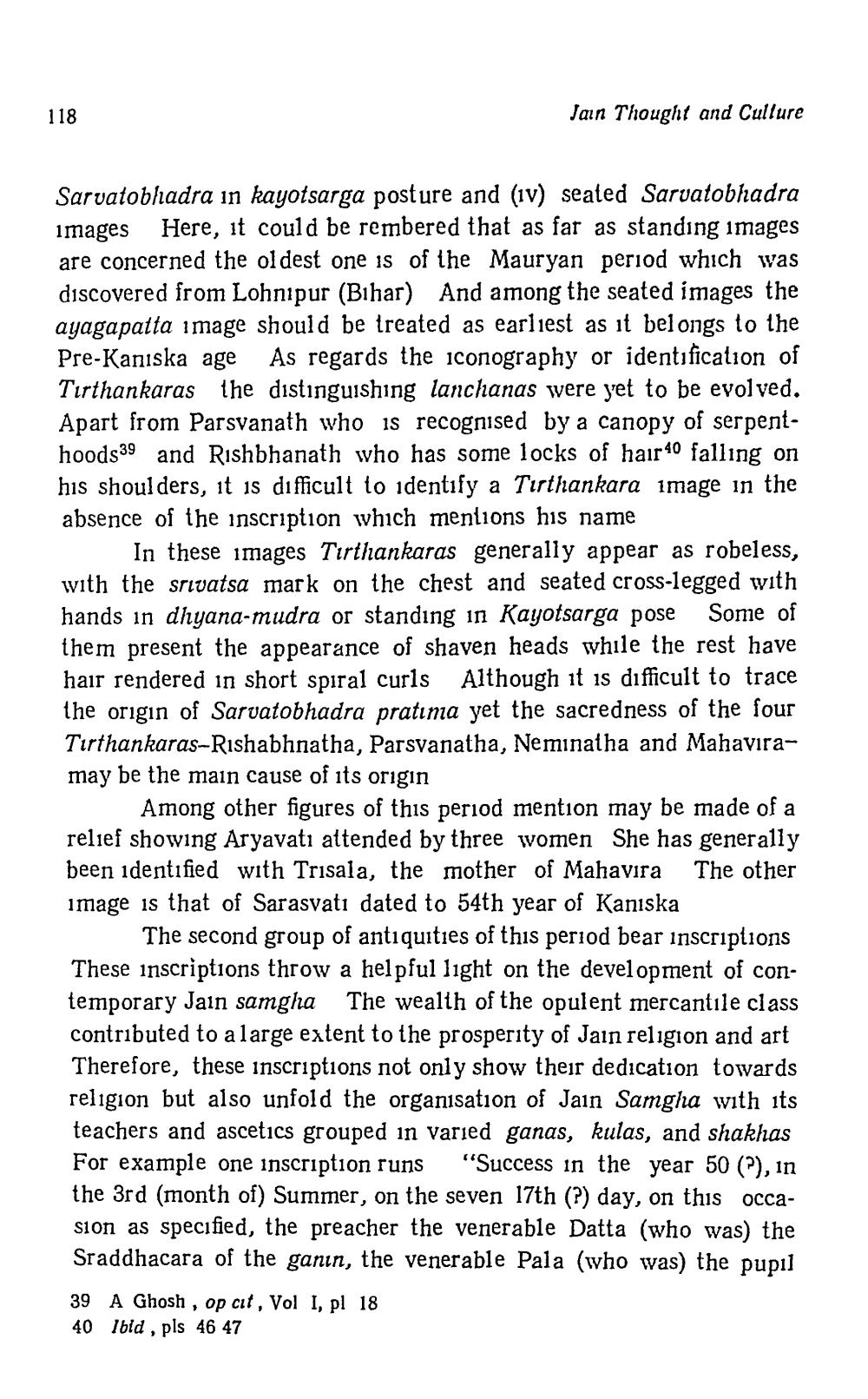________________
118
Jan Thought and Cullure
Sarvatobhadra in kayotsarga posture and (iv) seated Sarvatobhadra images Here, it could be rembered that as far as standing images are concerned the oldest one is of the Mauryan period which was discovered from Lohnipur (Bihar) And among the seated images the ayagapatta image should be treated as earliest as it belongs to the Pre-Kaniska age As regards the iconography or identification of Tirthankaras the distinguishing lanchanas were yet to be evolved. Apart from Parsvanath who is recognised by a canopy of serpenthoods39 and Rishbhanath who has some locks of hair 40 falling on his shoulders, it is difficult to identify a Tirthankara image in the absence of the inscription which mentions his name
In these images Tirthankaras generally appear as robeless, with the srivatsa mark on the chest and seated cross-legged with hands in dhyana-mudra or standing in Kayotsarga pose Some of them present the appearance of shaven heads while the rest have hair rendered in short spiral curls Although it is difficult to trace the origin of Sarvatobhadra pratima yet the sacredness of the four Tirthankaras-Rishabhnatha, Parsvanatha, Neminatha and Mahaviramay be the main cause of its origin
Among other figures of this period mention may be made of a relief showing Aryavatı attended by three women She has generally been identified with Trisala, the mother of Mahavira The other image is that of Sarasvati dated to 54th year of Kaniska
The second group of antiquities of this period bear inscriptions These inscriptions throw a helpful light on the development of contemporary Jain samgha The wealth of the opulent mercantile class contributed to a large extent to the prosperity of Jain religion and art Therefore, these inscriptions not only show their dedication towards religion but also unfold the organisation of Jain Samgha with its teachers and ascetics grouped in varied ganas, kulas, and shakhas For example one inscription runs "Success in the year 50 (?), in the 3rd (month of) Summer, on the seven 17th (?) day, on this occasion as specified, the preacher the venerable Datta (who was) the Sraddhacara of the ganın, the venerable Pala (who was) the pupil 39 A Ghosh , op cit, Vol I, pl 18 40 lbid, pls 46 47




